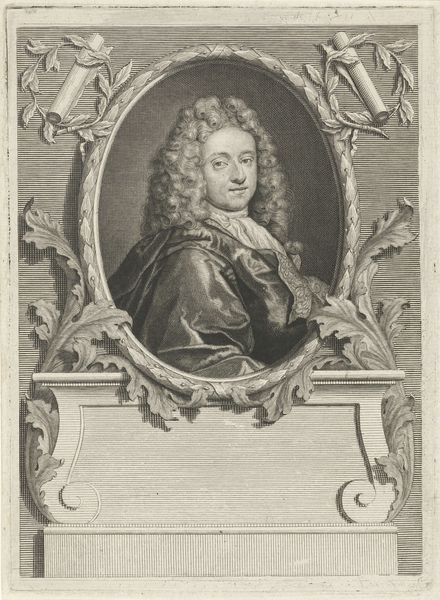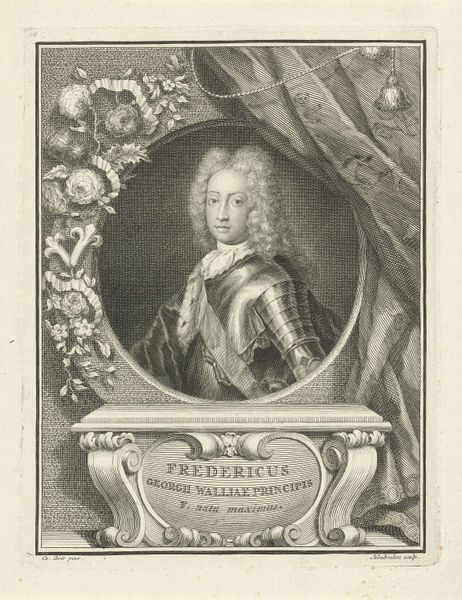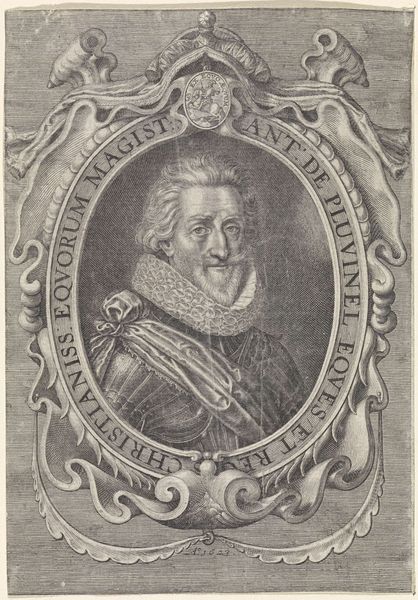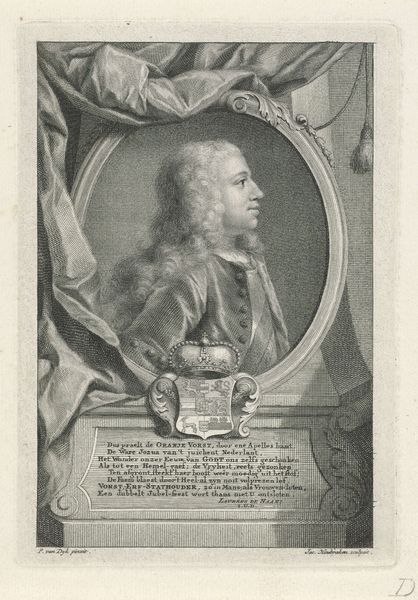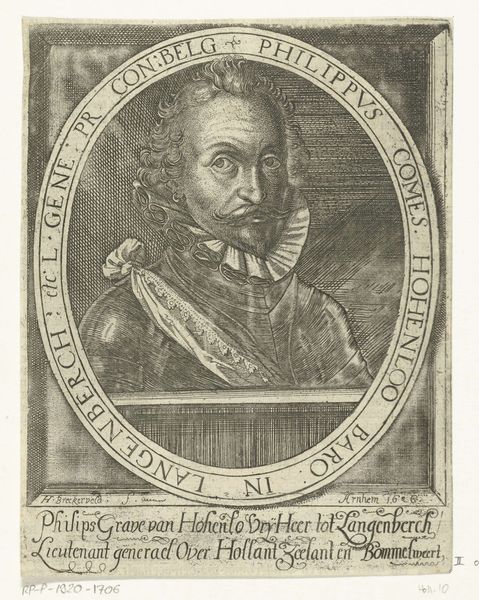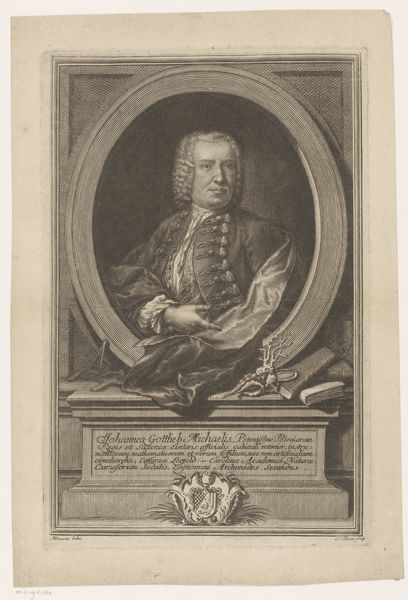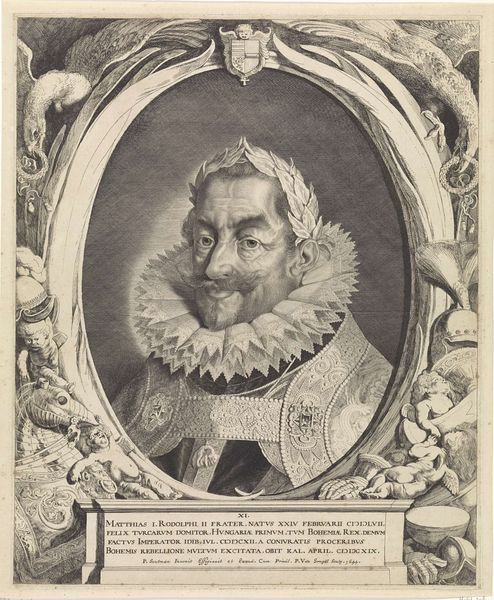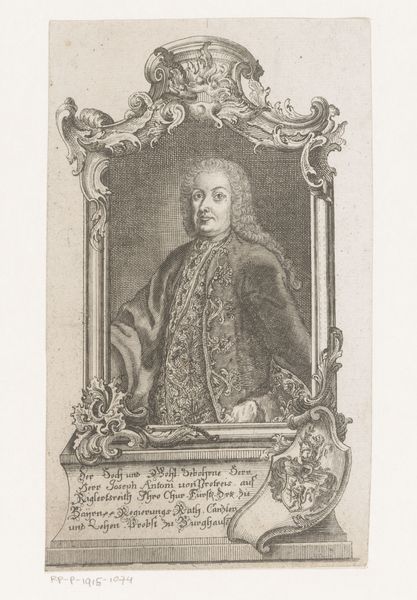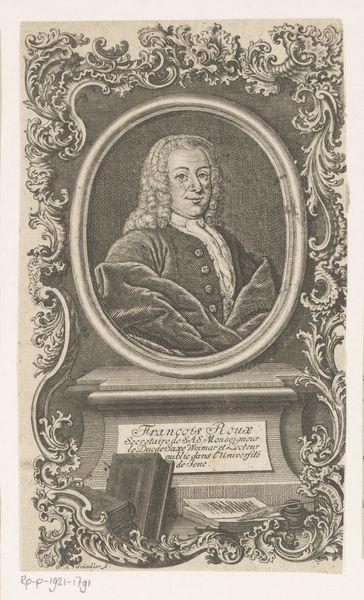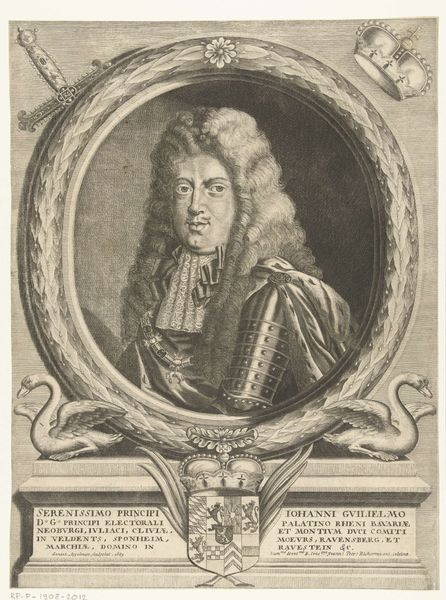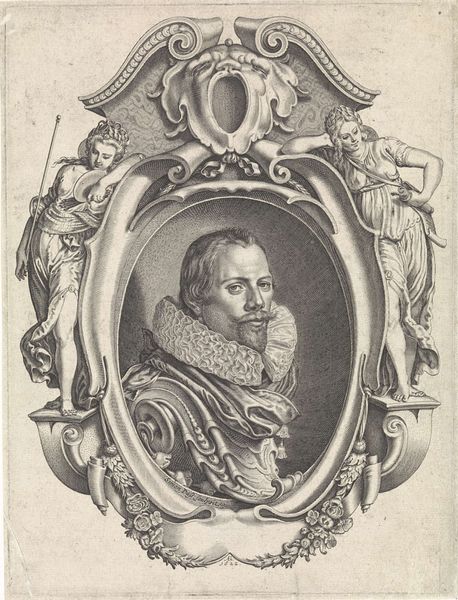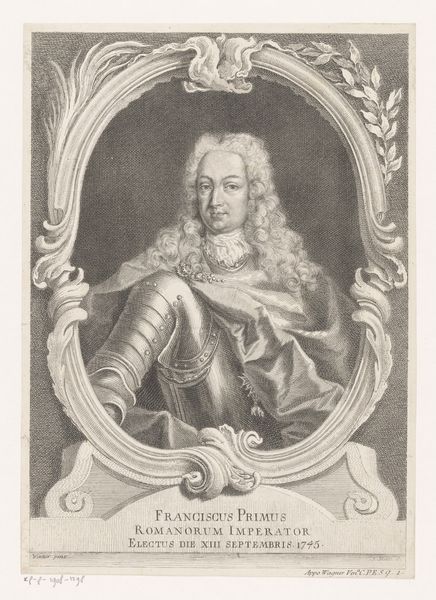
Portret van prins Willem IV, prins van Oranje-Nassau 1751 - 1761
0:00
0:00
etching, engraving
#
portrait
#
baroque
#
etching
#
history-painting
#
engraving
Dimensions: height 157 mm, width 106 mm
Copyright: Rijks Museum: Open Domain
This engraving portrays Prince William IV of Orange-Nassau, captured by Johannes van der Spyck. Notice the ornate sash and medallion he wears, symbols of power echoing those worn by Roman emperors, a visual claim to authority and lineage. Consider how such symbols persist and evolve. The medallion, once a practical piece of armor, becomes a decorative emblem, much like the laurel wreath of antiquity transforming into the crowns of monarchs. This echoes the ‘memory’ inherent in cultural symbols—the way they reappear across time, shifting in meaning. The Prince’s formal attire also speaks volumes. Think back to medieval portraits; the regalia served as a means to project influence and status, an idea that is still present today in uniforms and formal wear. It's a psychological strategy, engaging viewers on a subconscious level, prompting respect, and even awe. These symbols reflect a cyclical progression. They resurface, evolve, and take on new meanings, connecting past and present.
Comments
No comments
Be the first to comment and join the conversation on the ultimate creative platform.

